Just starting out? See parts 1 and 2 here.
Good gardening requires good planning, and never more so than when it comes to succession planting.
Succession planting is a way to extend your harvest, so you have different crops ripening at different times over the year, instead of having everything mature all at once and then having nothing at all for another couple of months.
There are a few ways to do succession planting, and all require a bit of note taking so you can remember what you planted, when! In permaculture, we use the term ‘stacking in time’ to refer to what is essentially succession planning: making the best use of space by staggering plantings and inter-planting crops so every inch of soil is growing food for us to eat, in every season.
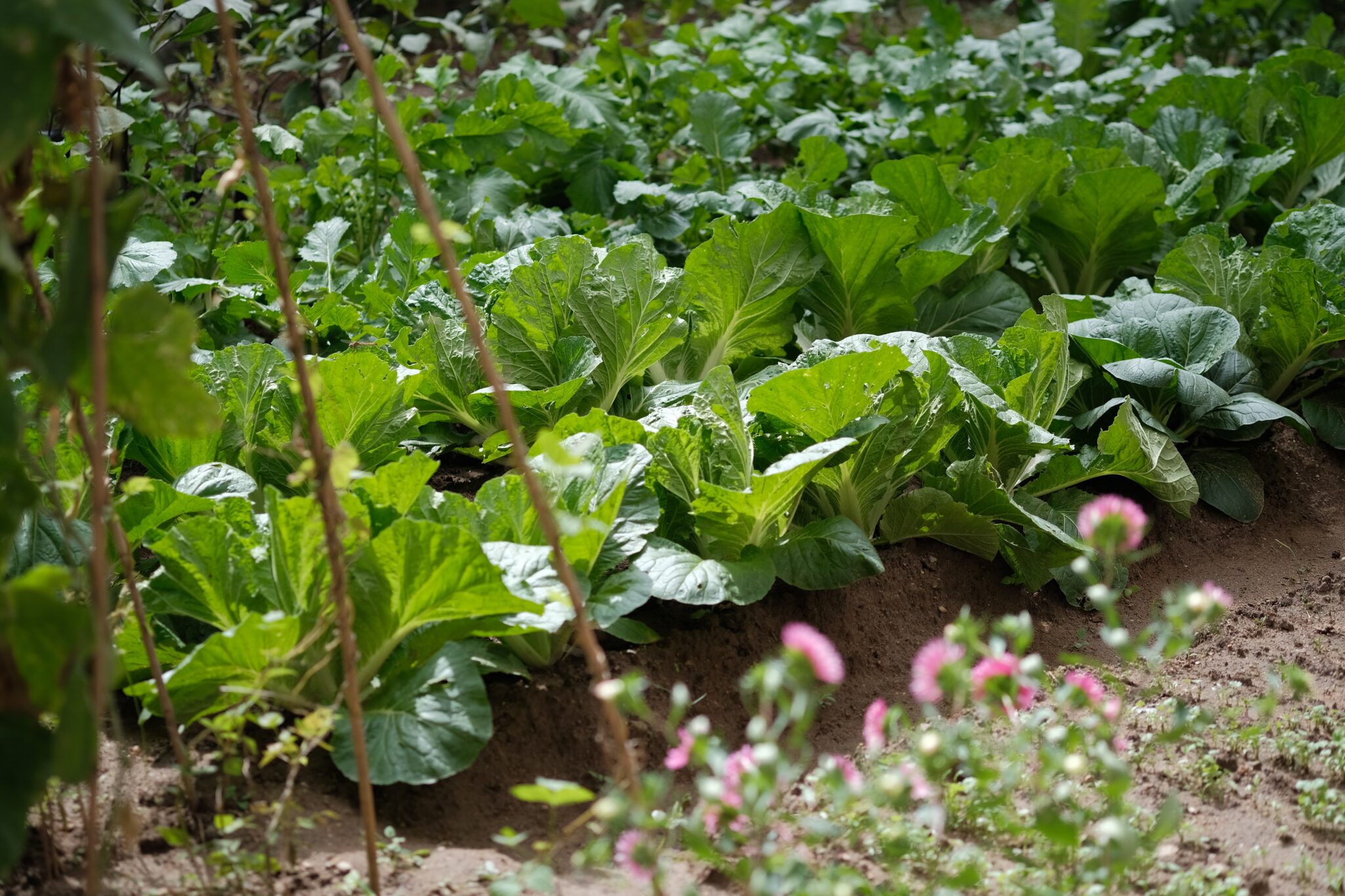
Staggered Plantings of the same crop
Space out plantings of the same vegetable every 2-4 weeks instead of planting all at once, so you can keep harvesting throughout the season rather than having it all ready at once.
Different vegetables in the same spot
Intercropping two vegetables in the same space by using two different but complementary species that don’t compete for space. Eg. Growing lettuce between broccoli while young, and once the broccoli is big enough to fill in the spaces, the lettuce is ready to harvest. You can do the same with radish and carrots: Plant rows of radishes between your carrot rows, as these will be ready to harvest in 4-6 weeks, just when the growing carrots will start needing more room.
Different vegetables in succession
Some crops have short growing seasons, and the space they were using once harvested can be replanted with a later season crop. For example, you can plant fast-growing greens like rocket and lettuce to fill in space in a bed before later season crops like tomatoes or zucchinis are ready to plant.
Same crop with different maturity rates
Some vegetables have different varieties that mature at different speeds, with early, mid and late season varieties being common. Check the seed packets for ‘days to maturity’, or choose varieties that are labelled such. Cabbages, broccoli and cauliflower are some examples of winter vegetables that come in early, mid and late season varieties.
To successfully grow food all year, you’ll need to do a bit of research on the planting times for each crop, and create a planting schedule (and stick to it!). In a limited space, this might sometimes mean sacrificing a portion of the previous crop to make sure you have time to plant the next. For example, in Melbourne often tomatoes and capsicums are still producing well into late Autumn (sometimes even winter if they’re in a protected spot), but if you need the space to plant your kale and broccoli before it gets too cold, you’ll have to pull them out early.
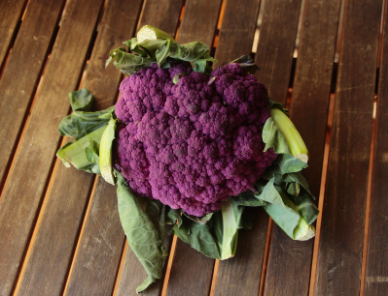
Companion Planting
When we’re talking about planting different vegetables side by side to save space, it’s helpful to know which plants are compatible. Plants which aid each other’s growth are called companion plants, and they can do this in many ways. Some examples of successful companion plant relationships are:
– Taller crops shading a heat-sensitive smaller crop, eg. Growing tomatoes with lettuce at the bases. If tomatoes are planted to the west of lettuces they can protect them from the hot afternoon sun in summer, while the lettuces act as a living mulch for the tomato roots, helping to retain moisture and keep them cool.
– Flowering plants attracting beneficial insects, eg. dill with broccoli or kale. Dill attracts parasitic wasps (a beneficial insect) which control the white cabbage butterfly, whose caterpillars are a major pest of brassicas.
– Aromatic plants deterring pests, eg. chives help to deter aphids which is particularly helpful for broccoli, cabbages, cauliflower and kale.
There are many other examples of companion planting, and there are many charts available online showing all the different possible combinations. The best thing to do is just experiment and see what works for you. Possibly the best outcome of companion planting is increasing diversity in your garden-the more variety of crops you have, the more resilient your garden will be to pest and disease pressures.

Flowering plants attract beneficial insects which keep garden pests under control.
There are many other examples of companion planting, and there are many charts available online showing all the different possible combinations. The best thing to do is just experiment and see what works for you. Possibly the best outcome of companion planting is increasing diversity in your garden-the more variety of crops you have, the more resilient your garden will be to pest and disease pressures.
Which leads us to…
Organic Pest Management
In addition to companion planting, there are many other techniques we can use to manage pests in the garden. The goal here should always be to create a healthy garden ecosystem to prevent pest populations from building up in the first place, rather than reaching for a pesticide, as these can be harmful no matter how organic they are. A few control strategies for common garden pests are:
Slugs and snails
 These can be picked off and squished as you find them. Pouring some beer into a jar or cut-in half can and submerging it in the soil with the liquid exposed to the surface is a great trap for slugs and snails, who can’t seem to resist the yeasty smell. Copper tape can be purchased from nurseries which can be laid around plants in small spaces to protect seedlings, and crushed eggshells sprinkled around young plants can also help. You’ll know if your seedlings are being eaten by snails because there will be bite marks around the edges of leaves, or the leaves will disappear completely, leaving only bare stems!
Caterpillars
These can be picked off and squished as you find them. Pouring some beer into a jar or cut-in half can and submerging it in the soil with the liquid exposed to the surface is a great trap for slugs and snails, who can’t seem to resist the yeasty smell. Copper tape can be purchased from nurseries which can be laid around plants in small spaces to protect seedlings, and crushed eggshells sprinkled around young plants can also help. You’ll know if your seedlings are being eaten by snails because there will be bite marks around the edges of leaves, or the leaves will disappear completely, leaving only bare stems!
Caterpillars
 The most common and destructive of these is the white cabbage moth, whose larvae are the green caterpillars who love broccolis, cabbages, cauliflower and other brassicas. If there are telltale holes in your leaves (not just around the edges), the culprit is likely to be these guys. They lay tiny yellow eggs on young leaves which you can see if you look closely. If you catch them early, you can just squish these eggs before they get the chance to hatch, and give the caterpillars the same treatment.
If you see the white cabbage moth flying around your garden, you can try using white bread tags or other small, white objects stuck on stakes as decoys, as these will look like other moths which will prevent them from landing and laying their eggs on your precious seedlings.
In the case of a severe infestation, you can purchase Dipel from most nurseries. This organic certified powder can be mixed with water and sprayed on susceptible plants, and is actually a bacteria which infects and kills caterpillars while not harming other insects. Another option for protecting brassicas is to use a fine netting (available from most nurseries) draped over that section of the garden, which will prevent the cabbage moth from landing on and laying eggs on your seedlings.
Aphids
The most common and destructive of these is the white cabbage moth, whose larvae are the green caterpillars who love broccolis, cabbages, cauliflower and other brassicas. If there are telltale holes in your leaves (not just around the edges), the culprit is likely to be these guys. They lay tiny yellow eggs on young leaves which you can see if you look closely. If you catch them early, you can just squish these eggs before they get the chance to hatch, and give the caterpillars the same treatment.
If you see the white cabbage moth flying around your garden, you can try using white bread tags or other small, white objects stuck on stakes as decoys, as these will look like other moths which will prevent them from landing and laying their eggs on your precious seedlings.
In the case of a severe infestation, you can purchase Dipel from most nurseries. This organic certified powder can be mixed with water and sprayed on susceptible plants, and is actually a bacteria which infects and kills caterpillars while not harming other insects. Another option for protecting brassicas is to use a fine netting (available from most nurseries) draped over that section of the garden, which will prevent the cabbage moth from landing on and laying eggs on your seedlings.
Aphids
 There are many different varieties of aphids and they can be grey, green, white, black or almost any other colour under the sun. They are tiny sap-sucking insects that can affect many different vegetable crops. You will often see them in groups on infested leaves, but misshapen, curling and stunted leaves are also a telltale sign of infestation. The good news is that they’re relatively easy to get rid of.
To prevent aphids:
-Include flowering plants in your garden, aiming to have something flowering in every season. This will attract beneficial insects like ladybugs, lacewings and parasitic wasps who feed on aphids.
-Plant garlic or chives near susceptible plants as aphids are deterred by their strong smell.
To get rid of aphids once present:
-Spray them off with a hose, usually this is enough to dislodge them.
-Make a homemade aphid spray by mixing an eco-safe soap with water and a pinch of cayenne pepper and spray regularly on infested plants (be careful not to spray on really hot days as it can cause leaves to burn)
-Neem oil is an effective, natural insecticide which kills aphids and can be purchased from nurseries.
For all other pest species, the guidelines are generally the same. The healthier your plants are, the less susceptible they will be to pest infestations. The key take home messages are: plant for diversity, include lots of flowers in your garden, practice companion planting and check your garden regularly to make sure you get on top of any pest issues before they get out of hand!
There are many different varieties of aphids and they can be grey, green, white, black or almost any other colour under the sun. They are tiny sap-sucking insects that can affect many different vegetable crops. You will often see them in groups on infested leaves, but misshapen, curling and stunted leaves are also a telltale sign of infestation. The good news is that they’re relatively easy to get rid of.
To prevent aphids:
-Include flowering plants in your garden, aiming to have something flowering in every season. This will attract beneficial insects like ladybugs, lacewings and parasitic wasps who feed on aphids.
-Plant garlic or chives near susceptible plants as aphids are deterred by their strong smell.
To get rid of aphids once present:
-Spray them off with a hose, usually this is enough to dislodge them.
-Make a homemade aphid spray by mixing an eco-safe soap with water and a pinch of cayenne pepper and spray regularly on infested plants (be careful not to spray on really hot days as it can cause leaves to burn)
-Neem oil is an effective, natural insecticide which kills aphids and can be purchased from nurseries.
For all other pest species, the guidelines are generally the same. The healthier your plants are, the less susceptible they will be to pest infestations. The key take home messages are: plant for diversity, include lots of flowers in your garden, practice companion planting and check your garden regularly to make sure you get on top of any pest issues before they get out of hand!
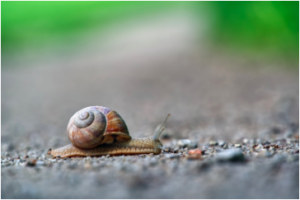 These can be picked off and squished as you find them. Pouring some beer into a jar or cut-in half can and submerging it in the soil with the liquid exposed to the surface is a great trap for slugs and snails, who can’t seem to resist the yeasty smell. Copper tape can be purchased from nurseries which can be laid around plants in small spaces to protect seedlings, and crushed eggshells sprinkled around young plants can also help. You’ll know if your seedlings are being eaten by snails because there will be bite marks around the edges of leaves, or the leaves will disappear completely, leaving only bare stems!
Caterpillars
These can be picked off and squished as you find them. Pouring some beer into a jar or cut-in half can and submerging it in the soil with the liquid exposed to the surface is a great trap for slugs and snails, who can’t seem to resist the yeasty smell. Copper tape can be purchased from nurseries which can be laid around plants in small spaces to protect seedlings, and crushed eggshells sprinkled around young plants can also help. You’ll know if your seedlings are being eaten by snails because there will be bite marks around the edges of leaves, or the leaves will disappear completely, leaving only bare stems!
Caterpillars
 The most common and destructive of these is the white cabbage moth, whose larvae are the green caterpillars who love broccolis, cabbages, cauliflower and other brassicas. If there are telltale holes in your leaves (not just around the edges), the culprit is likely to be these guys. They lay tiny yellow eggs on young leaves which you can see if you look closely. If you catch them early, you can just squish these eggs before they get the chance to hatch, and give the caterpillars the same treatment.
If you see the white cabbage moth flying around your garden, you can try using white bread tags or other small, white objects stuck on stakes as decoys, as these will look like other moths which will prevent them from landing and laying their eggs on your precious seedlings.
In the case of a severe infestation, you can purchase Dipel from most nurseries. This organic certified powder can be mixed with water and sprayed on susceptible plants, and is actually a bacteria which infects and kills caterpillars while not harming other insects. Another option for protecting brassicas is to use a fine netting (available from most nurseries) draped over that section of the garden, which will prevent the cabbage moth from landing on and laying eggs on your seedlings.
Aphids
The most common and destructive of these is the white cabbage moth, whose larvae are the green caterpillars who love broccolis, cabbages, cauliflower and other brassicas. If there are telltale holes in your leaves (not just around the edges), the culprit is likely to be these guys. They lay tiny yellow eggs on young leaves which you can see if you look closely. If you catch them early, you can just squish these eggs before they get the chance to hatch, and give the caterpillars the same treatment.
If you see the white cabbage moth flying around your garden, you can try using white bread tags or other small, white objects stuck on stakes as decoys, as these will look like other moths which will prevent them from landing and laying their eggs on your precious seedlings.
In the case of a severe infestation, you can purchase Dipel from most nurseries. This organic certified powder can be mixed with water and sprayed on susceptible plants, and is actually a bacteria which infects and kills caterpillars while not harming other insects. Another option for protecting brassicas is to use a fine netting (available from most nurseries) draped over that section of the garden, which will prevent the cabbage moth from landing on and laying eggs on your seedlings.
Aphids
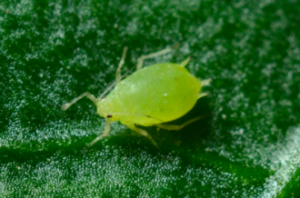 There are many different varieties of aphids and they can be grey, green, white, black or almost any other colour under the sun. They are tiny sap-sucking insects that can affect many different vegetable crops. You will often see them in groups on infested leaves, but misshapen, curling and stunted leaves are also a telltale sign of infestation. The good news is that they’re relatively easy to get rid of.
To prevent aphids:
-Include flowering plants in your garden, aiming to have something flowering in every season. This will attract beneficial insects like ladybugs, lacewings and parasitic wasps who feed on aphids.
-Plant garlic or chives near susceptible plants as aphids are deterred by their strong smell.
To get rid of aphids once present:
-Spray them off with a hose, usually this is enough to dislodge them.
-Make a homemade aphid spray by mixing an eco-safe soap with water and a pinch of cayenne pepper and spray regularly on infested plants (be careful not to spray on really hot days as it can cause leaves to burn)
-Neem oil is an effective, natural insecticide which kills aphids and can be purchased from nurseries.
For all other pest species, the guidelines are generally the same. The healthier your plants are, the less susceptible they will be to pest infestations. The key take home messages are: plant for diversity, include lots of flowers in your garden, practice companion planting and check your garden regularly to make sure you get on top of any pest issues before they get out of hand!
There are many different varieties of aphids and they can be grey, green, white, black or almost any other colour under the sun. They are tiny sap-sucking insects that can affect many different vegetable crops. You will often see them in groups on infested leaves, but misshapen, curling and stunted leaves are also a telltale sign of infestation. The good news is that they’re relatively easy to get rid of.
To prevent aphids:
-Include flowering plants in your garden, aiming to have something flowering in every season. This will attract beneficial insects like ladybugs, lacewings and parasitic wasps who feed on aphids.
-Plant garlic or chives near susceptible plants as aphids are deterred by their strong smell.
To get rid of aphids once present:
-Spray them off with a hose, usually this is enough to dislodge them.
-Make a homemade aphid spray by mixing an eco-safe soap with water and a pinch of cayenne pepper and spray regularly on infested plants (be careful not to spray on really hot days as it can cause leaves to burn)
-Neem oil is an effective, natural insecticide which kills aphids and can be purchased from nurseries.
For all other pest species, the guidelines are generally the same. The healthier your plants are, the less susceptible they will be to pest infestations. The key take home messages are: plant for diversity, include lots of flowers in your garden, practice companion planting and check your garden regularly to make sure you get on top of any pest issues before they get out of hand!For all other pest species, the guidelines are generally the same. The healthier your plants are, the less susceptible they will be to pest infestations. The key take home messages are: plant for diversity, include lots of flowers in your garden, practice companion planting and check your garden regularly to make sure you get on top of any pest issues before they get out of hand!
And there you have it, our three part series on ‘Cultivating Resilience: A Beginners Guide to Home Food Production’ is complete! Please leave any comments or questions below. We’d love to hear from you about how your Autumn gardening adventures are going, and what else you’re doing to cultivate resilience in your homes in these strange times.
Stay tuned for our next article where we’ll be delving deep into ‘Climate Smart Gardening’, exploring how climate change is impacting food production, and drawing on strategies from permaculture and regenerative agriculture to help us mitigate and adapt to these challenges.
Until then, let’s make the best use of our time at home to get out in the garden and grow some food!
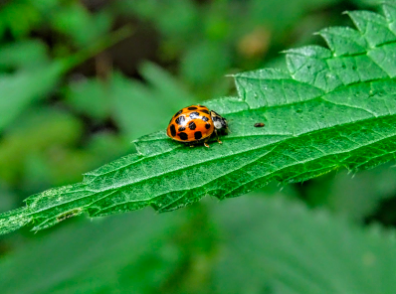
Ladybugs are the superheroes of the veggie patch: A single ladybug can eat 50 aphids a day, or 5000 over a lifetime! They also eat mites, scale insects and whiteflies.
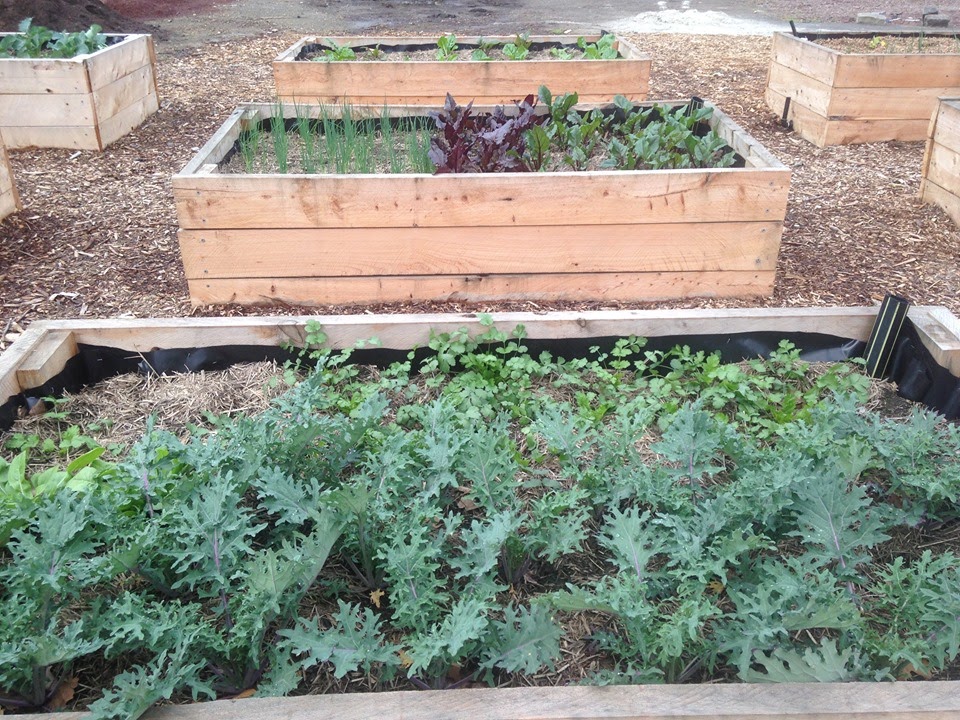


Recent Comments